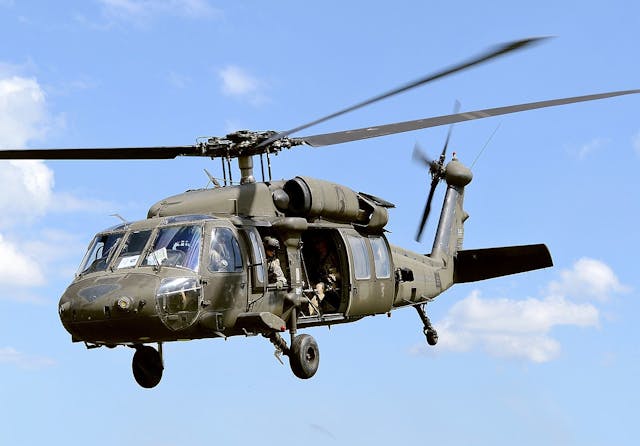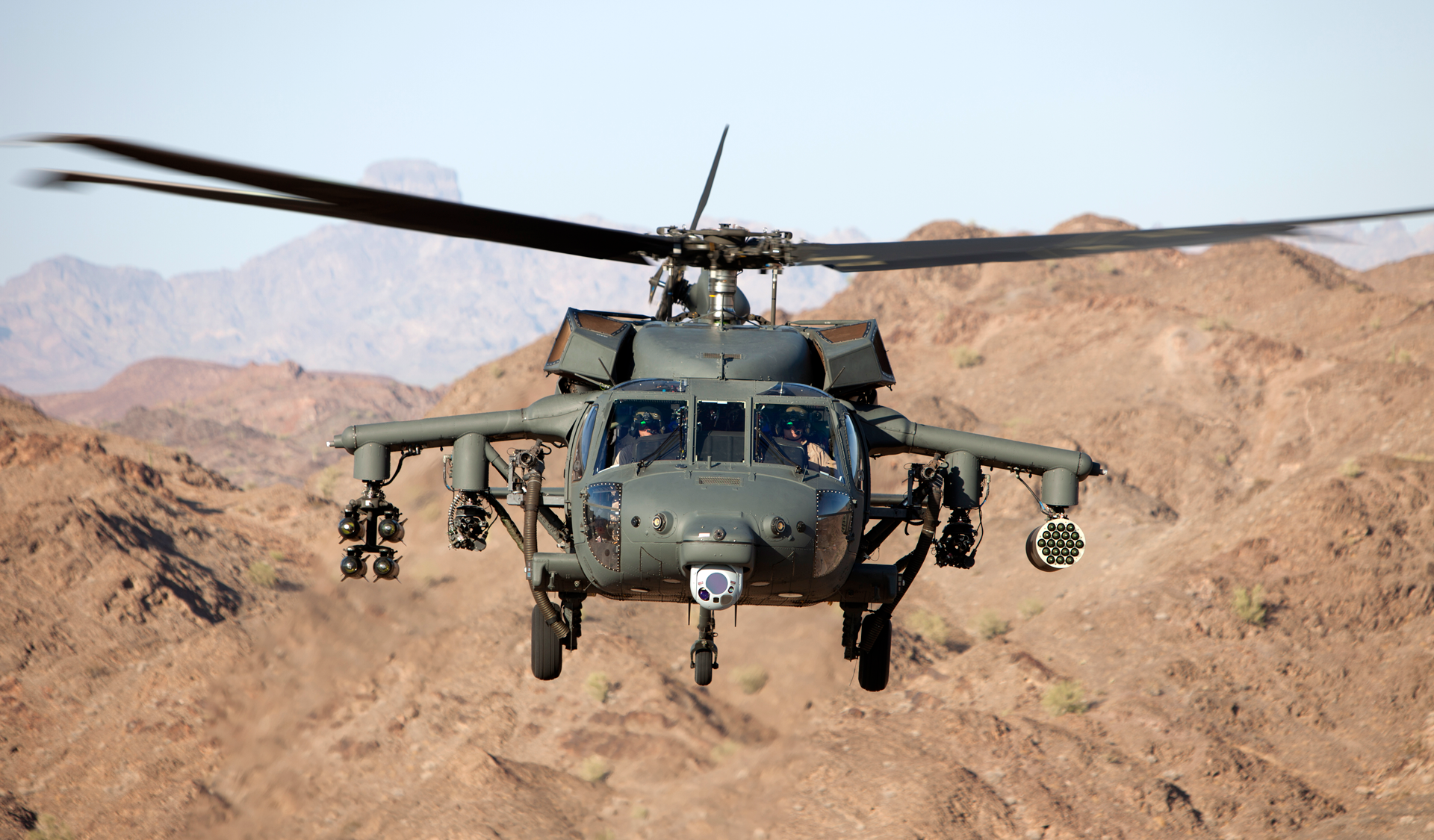Learn more about the State-of-the-Art Technology Powering the Blackhawk Helicopter
Learn more about the State-of-the-Art Technology Powering the Blackhawk Helicopter
Blog Article
Revealing the Power and Convenience of the Blackhawk Helicopter
The Blackhawk helicopter stands as a testimony to engineering quality and armed forces technology, dramatically shaping the landscape of modern airborne operations. Initially established in the late 1960s, this dual-engine airplane has actually advanced right into a multifaceted platform capable of carrying out a series of goals, from tactical troop implementations to immediate clinical evacuations. Its design integrates sophisticated innovation and products, improving both efficiency and survivability. As we explore its history and functional capabilities, one should consider just how the Blackhawk remains to influence contemporary combat methods and humanitarian efforts alike. What does this mean for the future of army air travel?
Background of the Blackhawk
The history of the Blackhawk helicopter is noted by significant technical improvements and a tactical development in armed forces aeronautics. Developed in the late 1960s by Sikorsky Airplane, the UH-60 Blackhawk was at first conceived to change the older UH-1 Iroquois, typically referred to as the "Huey." The Blackhawk's first trip occurred in 1974, and it was officially introduced to the united state Military in 1979.


This airplane was created to satisfy the demanding requirements of modern warfare, concentrating on versatility, longevity, and rate (Blackhawk Helicopter). Its capability to operate in numerous atmospheres, coupled with innovative avionics and design attributes, swiftly established the Blackhawk as a crucial possession for armed forces operations worldwide
Throughout the 1980s and 1990s, the Blackhawk saw considerable use in different problems, including the Gulf Battle and humanitarian objectives. Today, the Blackhawk stays an iconic sign of armed forces aeronautics, continually improved to meet contemporary difficulties.
Trick Attributes and Specifications
Blackhawk helicopters are renowned for their design excellence and functional flexibility, boasting a variety of essential functions and requirements that improve their performance in numerous army roles. Among the most substantial attributes is their dual-engine configuration, typically powered by the T700-GE-701C engines, which supply remarkable reliability and performance. The helicopter has a maximum cruise ship rate of around 150 knots and a solution ceiling of around 20,000 feet, permitting it to run effectively in varied settings.
The Blackhawk's airframe is created from sophisticated composite materials and aluminum alloys, ensuring a durable framework while minimizing weight. It includes a totally expressed rotor system that offers exceptional dexterity and security. The helicopter can fit up to 11 combat troops or bring up to 8,000 extra pounds of external freight, making it very adaptable for different goals.
In Addition, the Blackhawk is equipped with advanced avionics and communication systems, enhancing situational understanding and objective control. Its capability to operate in damaging weather, incorporated with its reduced acoustic trademark, makes it a stealthy option for tactical procedures. Generally, these attributes add to the Blackhawk's track record as a cornerstone of modern-day army aviation.
Versatile Operational Responsibilities
Prominent for their engineering excellence and progressed abilities, Blackhawk helicopters offer a wide range of operational functions within military structures. Initially developed for army transportation, their flexibility has actually increased, allowing them to perform various goals efficiently.
One of the key duties of the Blackhawk is as an energy helicopter, assisting in logistical assistance by transporting materials and personnel to and from remote places. Furthermore, they succeed in medical evacuation (MEDEVAC) procedures, furnished with sophisticated medical devices and employees to give important care in the field.
In combat scenarios, Blackhawks can operate as armed companion systems, supporting ground forces by engaging adversary assets while making sure army safety. Their capability for unique procedures makes them vital; they can perform reconnaissance missions, workers healing, and direct action raids, usually in high-threat environments.
Furthermore, the Blackhawk's adaptability enables it to support humanitarian objectives and disaster response efforts, supplying help and vital services in times of crisis. This broad range of functional roles shows the Blackhawk helicopter's unmatched adaptability, reaffirming its status as an essential possession in contemporary army operations worldwide.
Technological Developments
Countless technical innovations add to the Blackhawk helicopter's phenomenal efficiency and adaptability in diverse operational atmospheres. One of the most considerable developments is its composite rotor blades, which improve lift and ability to move while reducing weight and upkeep needs. The blades system employs sophisticated products that strengthen longevity and withstand environmental degradation, making sure reliable operation in extreme conditions.
Furthermore, the Blackhawk is geared up with a modern avionics suite that integrates advanced navigating and communication systems - Blackhawk Helicopter. This consists of GPS, radar, and multi-function displays that help with real-time situational recognition for pilots, adding to mission success under tough circumstances
Furthermore, the helicopter's fly-by-wire control system enables specific handling and enhanced responsiveness, giving pilots with improved control throughout complicated maneuvers. The incorporation of innovative engine technology, such as the T700-GE-701C engine, navigate to this site more enhances efficiency, providing raised power outcome and fuel effectiveness.
Finally, modular design principles enable rapid reconfiguration for different goals, from troop transport to clinical emptying, making the Blackhawk a functional possession in altruistic and armed forces operations. These technological developments collectively make certain that the Blackhawk stays a formidable existence in the skies.
Effect On Modern Warfare

Outfitted with advanced avionics and interaction systems, the Blackhawk makes it possible for smooth sychronisation among ground and air units, making certain timely and accurate reaction to dynamic fight situations. Its versatility enables for quick deployment in varied environments, from urban settings to tough surfaces, showing the complex nature of contemporary warfare.
Furthermore, the Blackhawk's exceptional rate and dexterity promote quick insertion and extraction of employees, lessening direct exposure to adversary fire. Its capacity to run in hostile problems, matched with sophisticated defensive procedures, boosts survivability and objective success prices.
As modern-day disputes significantly depend on joint operations and rapid response, the Blackhawk helicopter stays at the leading edge of armed forces method, symbolizing the evolution of air movement and the important duty of air power in attaining strategic goals. Its effect on modern-day war continues to redefine the capabilities of armed forces around the world.

Final Thought
To conclude, the Blackhawk helicopter exhibits the crossway of innovative design and functional adaptability, solidifying its status site link as a foundation of modern army air travel. Its historic importance, remarkable functions, and adaptability throughout numerous goal accounts highlight its vital duty in contemporary war. As technological technologies remain to boost its capabilities, the Blackhawk remains a vital property for armed pressures internationally, demonstrating unparalleled efficiency in both battle and humanitarian procedures.
The Blackhawk helicopter stands as a testimony to design quality and armed forces advancement, substantially forming the landscape of modern-day aerial procedures.The background of the Blackhawk helicopter is marked by considerable technical innovations and a calculated evolution in army aeronautics.Blackhawk helicopters are renowned for their design excellence and functional adaptability, flaunting a range of vital features and specifications that boost their efficiency in different army roles.Numerous technological technologies contribute to the Blackhawk helicopter's exceptional performance and adaptability in varied functional environments.In final thought, the Blackhawk helicopter exemplifies the crossway of innovative design and operational versatility, solidifying its condition as a cornerstone of modern-day military aeronautics.
Report this page